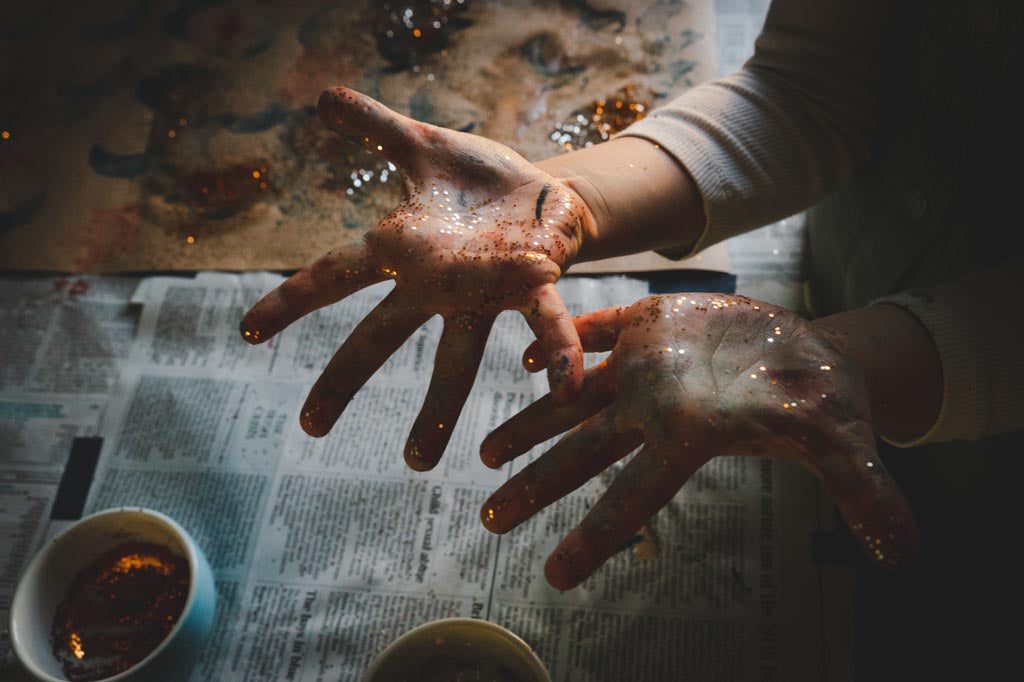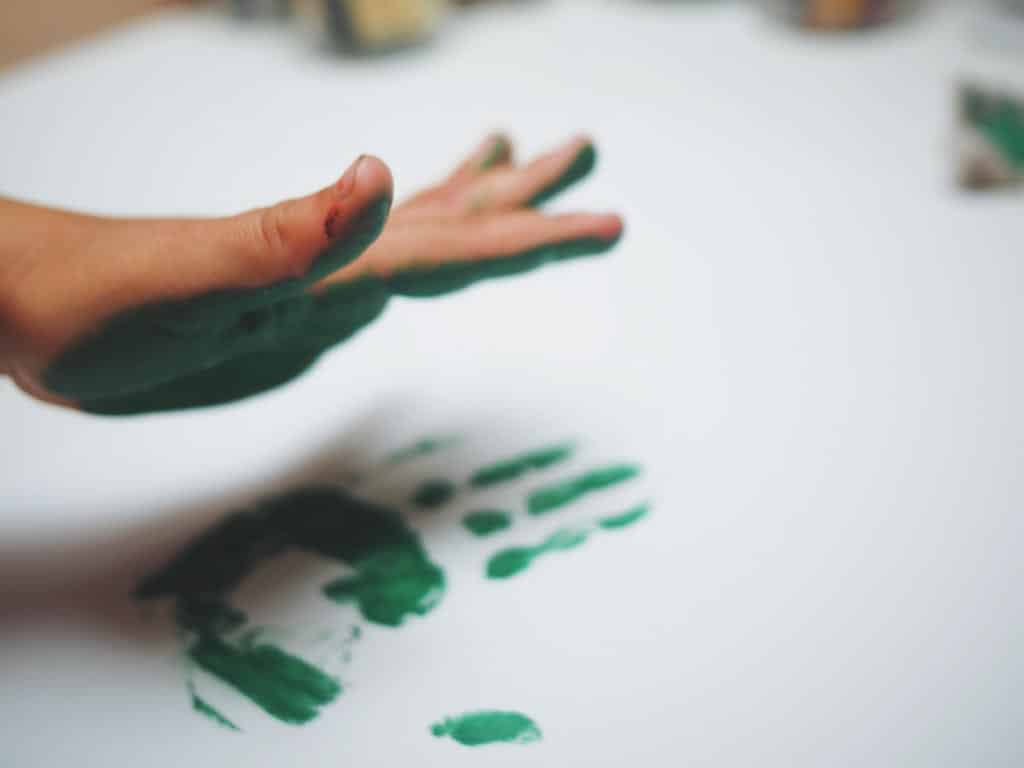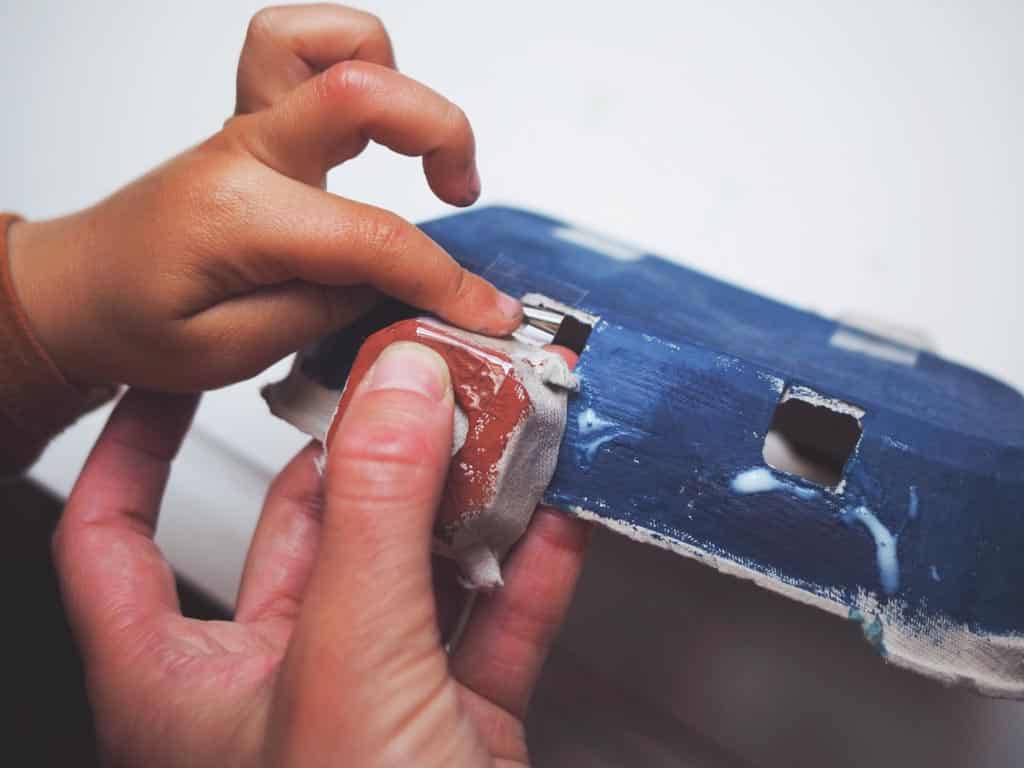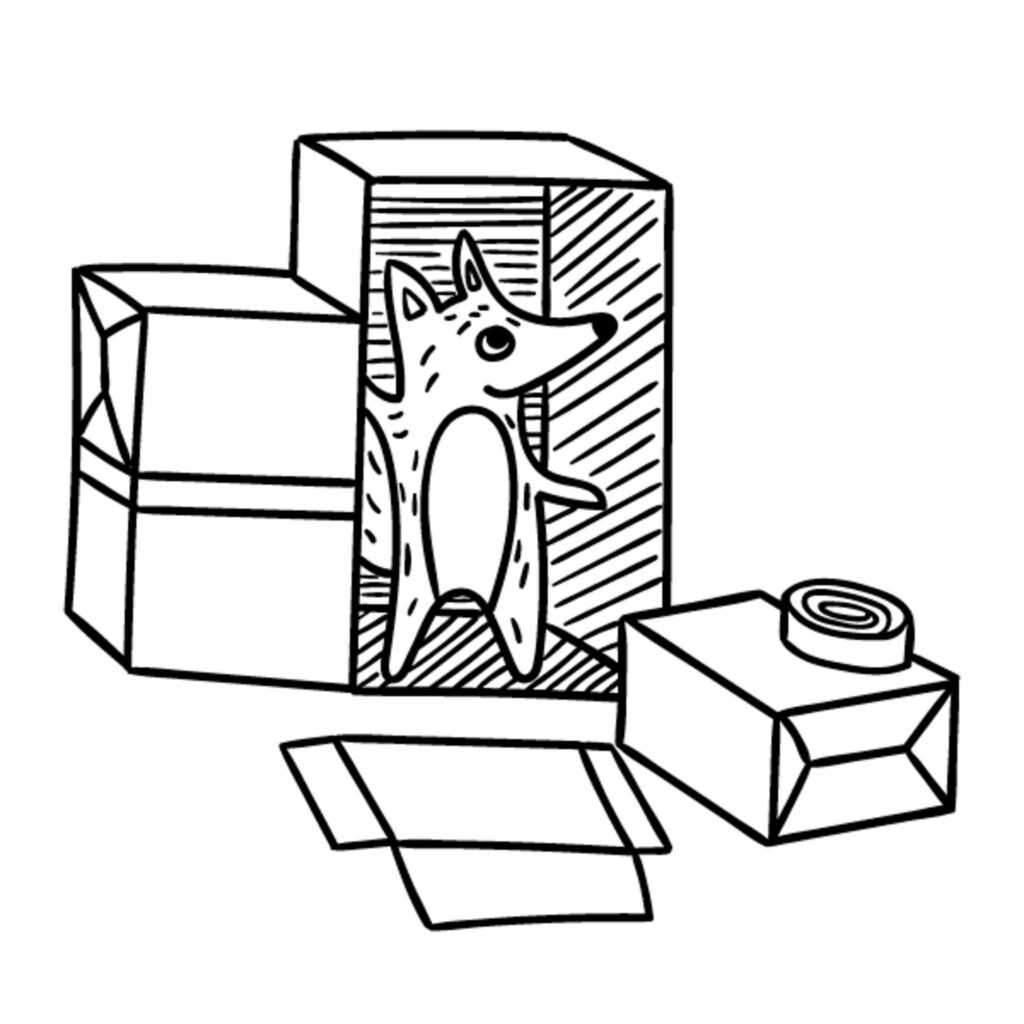Pointing is the point of finger painting.
Or, more precisely, finger isolation.
Most view finger painting as a seminal childhood experience. When it comes to finger painting with babies, though, some parents may find pause. Are these children too young for such an activity? Are they truly getting anything out of it? The answer might be complicated, but tackling such a project doesn’t need to be.
Benefits of Finger Painting With Babies
At every turn, research shows that engaging in artistic activities with your young ones yields tremendous benefits.
Strengthening Fine Motor Skills
When your baby begins to use their hands to paint, they end up flexing small muscles that are necessary for completing more nuanced tasks as they age. Occupational therapists frequently use the activity to address developmental delays for this exact reason.
Fostering Cognitive Development
Finger painting with babies can begin to establish the visual-spatial skills necessary for more complex artistic expressions while shoring up their newly enhanced fine motor skills. A study commissioned by the National Endowment for the Arts also found that artistic expression helps advance social-emotional awareness.
Exploring the creative process
Through visual arts, children can explore the creative process, as well as foster an interest in and sensitivity to art. They learn to use various materials and means of expression.
Calming effect
Painting allows for the release of tension and relaxation. It helps to practice concentration and mindfulness.
Quality Family Time
There’s no reason to treat finger painting with infants or toddlers as all business. The activity also provides an opportunity to bond with your baby – full of giggles and discoveries that will bring a smile to your face as well as theirs.
Concerns When Finger Painting With Babies
While finger painting with babies can be a lot of fun, that doesn’t mean it doesn’t come with some concerns.
Any parent who embarks on this endeavor can tell you one thing for certain – it makes quite the mess. Dipping brushes into paint and neatly across a canvas won’t be an infant’s strong suit. That paint will end up everywhere.
To this end, exposure to chemicals concerns many parents. Babies put the darndest things in their mouths, making the composition of paints a potential issue.
Finger painting with babies takes a lot of time, too. From setup to cleanup, expect to put in a great deal of work.
Finger paint recipes

One of the essential aspects of painting is good preparation. Some time ago, we shared our finger-paint recipe with you. Read more about finger-paint receipe.
Don’t be afraid to experiment with your own ideas. Maybe one day you’ll start painting with fragrant paints made from colorful spices, or perhaps you’ll decide to paint with mud? Try painting on unconventional surfaces. A child who doesn’t enjoy painting on paper might be fascinated by painting on wood, a plate, a stone, or glass.
Tips for Finger Painting With Babies
Are you ready to hit the canvas with your baby? You should consider the following.
- Prepare for the mess ahead of time. Make sure you set up the painting space in a way that ensures paint won’t end up where you don’t want it, with cleaning supplies at the ready.
- Painter’s plastic sheeting can be helpful, or setting up a painting area outside. An interesting idea is to create a house out of a cardboard box that the child can enter and paint everything around them, or to create a vertical painting surface (e.g., from tree to tree) using an old sheet or stretch wrap that children can paint on. Of course, make sure the child isn’t wearing their best clothes.
- Invest in child-friendly supplies. Do your research to secure non-toxic paints in bright colors to reap the most benefit. Safe paints, including homemade ones, will also be harmless to the environment when painting in the garden. They are often easier to wash off as well.
- Guide the artistic learning process. Identify colors, use artistic vocabulary to point out shapes, and model motions to help your baby learn how they can engage with the materials.
- Remember, the process is more important than the final result. Let the painting station become a space for experimentation, experiencing, sensory exploration, and expression.
- It’s worth appreciating a child’s creativity, for example, by showing interest in the creative process or hanging their work on the wall later.
Should You Finger Paint With Your Baby?

Don’t be scared away from finger painting with your child because of age or the potential for mess. There are ways to facilitate an enjoyable adventure that also helps them grow. Besides, should they turn out to be a prodigy, you may find those early pieces hanging in a museum one day!
As Pablo Picasso said, “Every child is an artist. The problem is how to remain an artist once he grows up.”
Enjoy!




